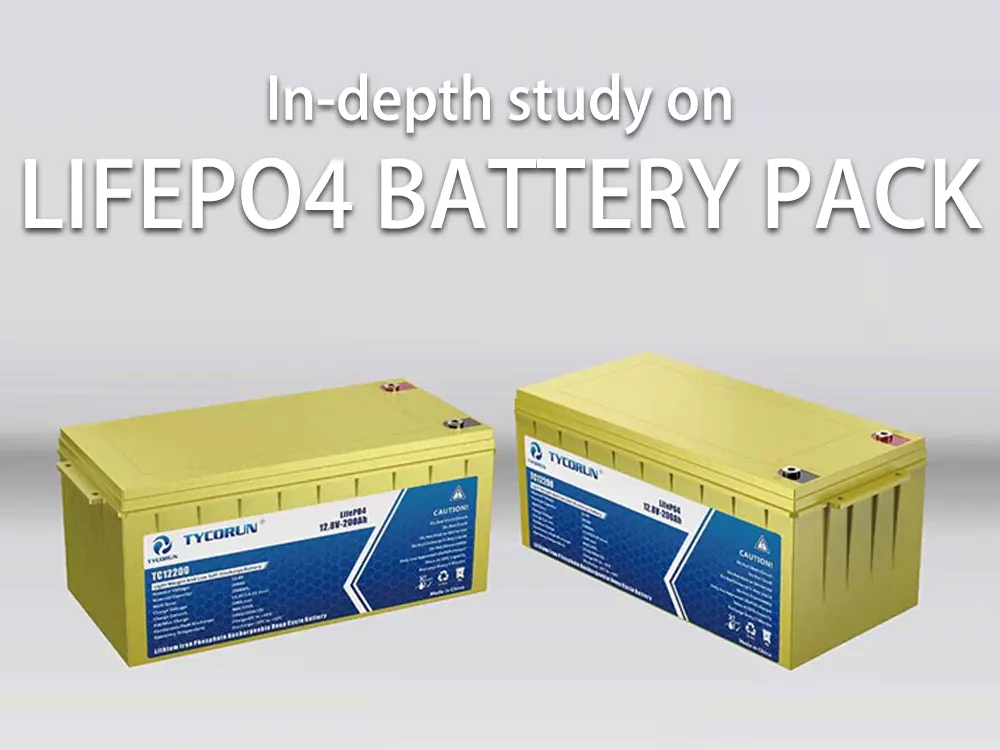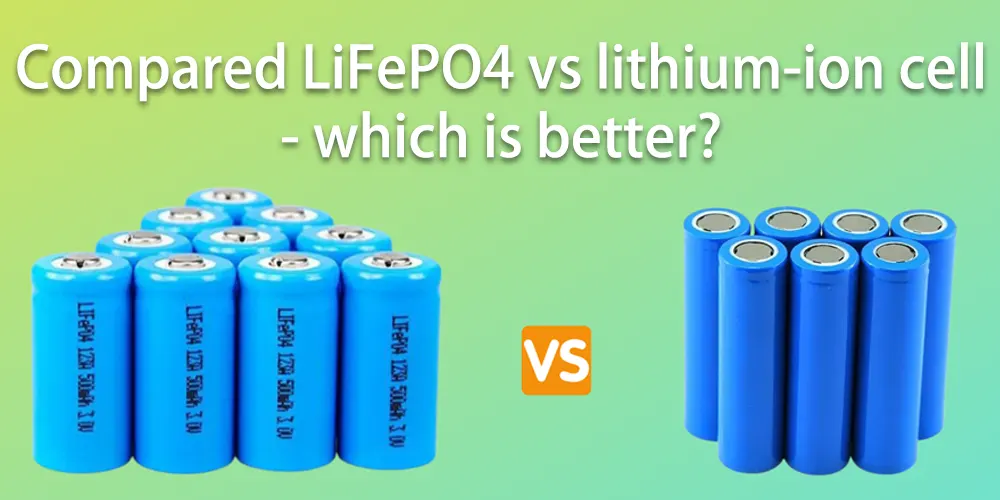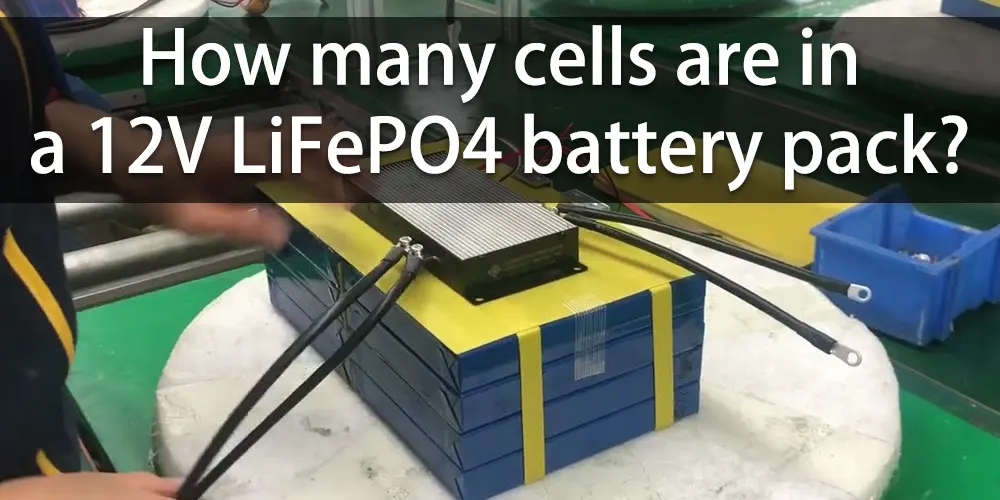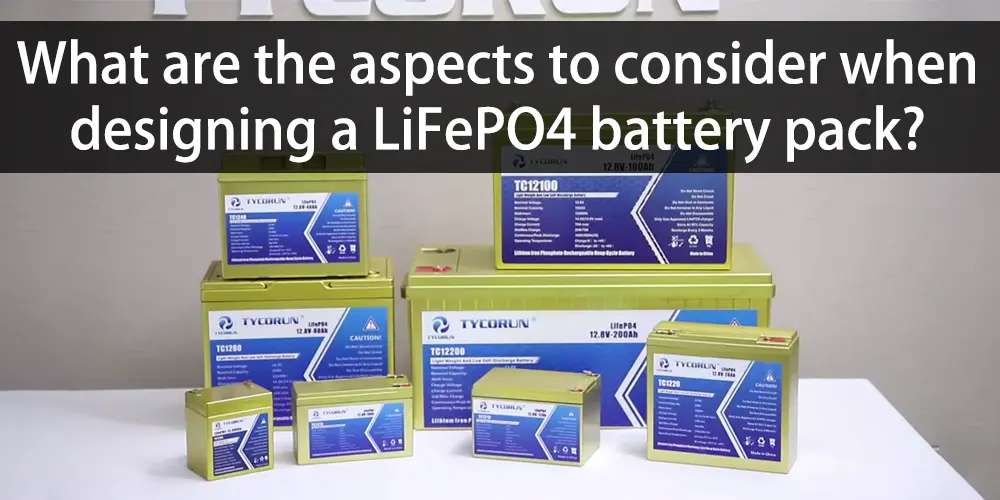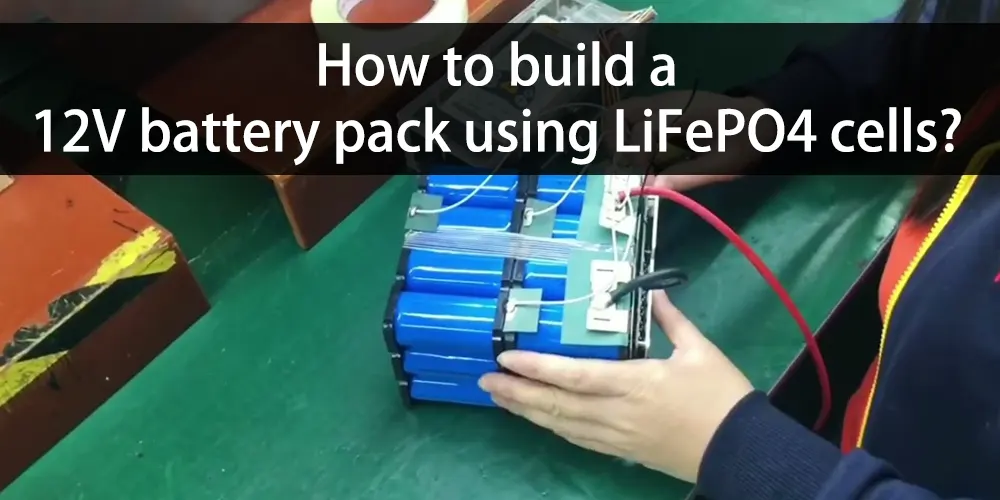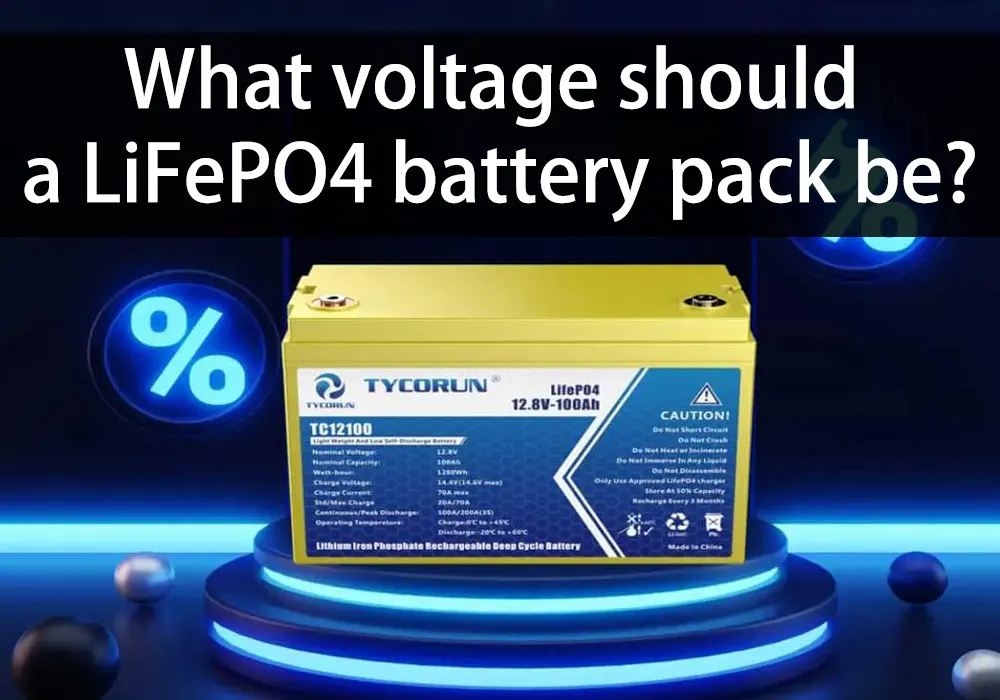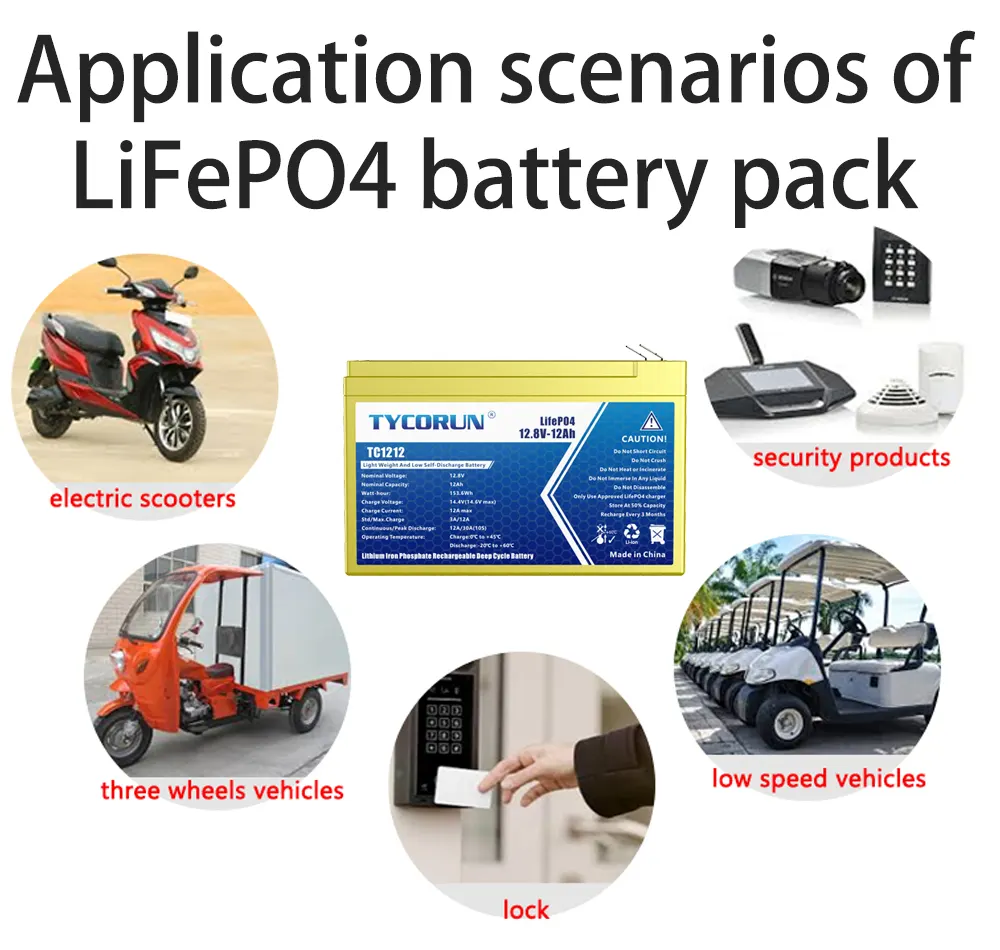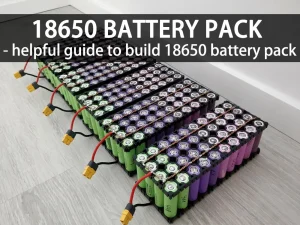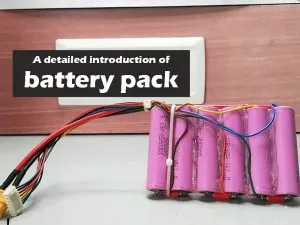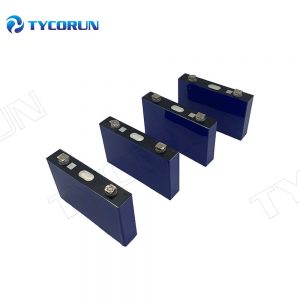In-depth study on LiFePO4 battery pack - unveiling LiFePO4 battery pack potential
The lithium iron phosphate battery pack, also known as the LiFePO4 battery pack, is one of the most efficient energy storage solutions in the rechargeable lithium battery segment.

It is widely accepted as the best economical energy storage solution outsmarting the competitors in performance, safety features, and longevity. Utilizing a unique cathode material, these advanced battery packs offer many advantages, including high energy density, fast charging capabilities, and extended cycle life.
What is a LiFePO4 battery cell?
It is a rechargeable lithium battery cell using lithium iron phosphate as the cathode and is used to make LiFePO4 battery pack. These cells offer remarkable performance, durability, and safety features, making them highly sought-after for various applications.
Compared LiFePO4 vs lithium-ion cell – which is better?
First of all, it should be explained that, as mentioned above, LiFePO4 battery cell is actually one of the types of lithium-ion cells, so the two cannot be directly compared. But people who don’t know enough about LiFePO4 battery cell and lithium-ion cell will wonder and ask the difference between LiFePO4 vs lithium-ion cell
Therefore, this article explains this problem here, and uses another common lithium-ion cell, namely lithium ion nmc battery cell, to compare with LiFePO4 battery cell, so as to help people understand lithium-ion cells better.
When comparing LiFePO4 battery cells to lithium-ion nmc cells, it is vital to consider their respective strengths and weaknesses. The LiFePO4 cell will have extended cycle life, excellent safety features, and better thermal stability than a lithium-ion nmc cell.
Under extreme temperature conditions, a LiFePO4 cell can perform better than lithium-ion nmc cells and show a minimum risk of thermal runaway. But a lithium-ion nmc cell can provide higher energy density and voltage output, which is ideal for using applications with weight and size limitations. However, they come with increased risks associated with safety and thermal management.
When you are in a situation to select between a LiFePO4 battery pack and a lithium nmc cell, you must consider the requirements and priorities. Here you can see that LiFePO4 battery packs stand out from the rest in safety and durability. In contrast, lithium-ion nmc cells offer higher energy density.
What is a LiFePO4 battery pack?
A LiFePO4 battery pack is a unit packed with many LiFePO4 battery cells connected serially or parallel as per the voltage and capacity requirement of the battery pack.
How many cells are in a 12V LiFePO4 battery pack?
The number of cells in a 12V LiFePO4 battery pack depends on the specific configuration of the battery pack. For achieving a 12V output, LiFePO4 cells with a nominal voltage of 3.2V are commonly used. In this case, a 12V lithium ion battery pack typically consists of four series-connected cells. Each cell contributes 3.2V; when combined in series, the voltages add up to 12.8V (3.2*4).
How many LiFePO4 cells are in a 48V pack?
Multiple LiFePO4 cells are connected in series to achieve a 48V output in a LiFePO4 battery pack. The exact number of cells in a 48V pack depends on the nominal voltage of each cell. LiFePO4 cells typically have a nominal voltage of 3.2V.
To calculate the number of cells required for a 48V pack, we can divide the desired voltage (48V) by the nominal voltage of each cell (3.2V). In this case:
48V / 3.2V = 15 cells
Therefore, a 48V LiFePO4 battery pack would typically consist of 15 cells connected in series. Each cell contributes 3.2V; when combined in series, the voltages add up to 48V.
What are the aspects to consider when designing a LiFePO4 battery pack?
Several factors must consider when designing a LiFePO4 battery pack to ensure optimal performance, safety, and longevity. Here are some key aspects to consider:
● Voltage and capacity: Determine the battery pack’s desired voltage and capacity requirements based on the application’s power demands. The number of cells required for the LiFePO4 battery pack depends on the voltage and capacity requirements.
● Cell balancing: To ensure a uniform charge and discharge process among all cells, a proper cell balancing system needs to implement, which will let to maintain the health of all cells and battery pack performance.
● Thermal management: Since LiFePO4 batteries perform best in an acceptable temperature with proper cooling or heat management system, implementing an effective thermal management system will let the battery pack prevent overheating and provide optimal performance.
● Safety measures: Implement safety features such as overcharge protection, over-discharge protection, and short circuit protection to safeguard the battery pack against potential hazards. Use a proper battery management system (BMS) to have better control and monitoring of the charge and discharge process.
● Mechanical design: The physical design must match the device’s space, weight, and form factor to ensure the compatibility of the battery pack with the intended application. Adequate structural integrity and secure cell connections are vital to maintaining the safety and longevity of the battery pack.
● Cycle life: Understand the cycle life of the LiFePO4 cells before designing the battery pack. Also, while designing the battery pack, it is essential to consider the factors such as the operating conditions, charging protocols, and depth of discharge for maximizing the cycle life and overall performance of the battery pack.
● Compliance and regulations: Ensure compliance with relevant safety standards and regulations specific to the application or industry the battery pack wants to use. This includes considering transportation regulations, safety certifications, and environmental requirements.
All the above factors are critical to have optimized performance of a LiFePO4 battery pack. Therefore, incorporate all the recommendations for an efficient, safe, dependable energy storage system with an extended life.
How to build a 12V battery pack using LiFePO4 cells?
To build a 12V battery pack using LiFePO4 cells, follow these general steps:
● Determine the desired capacity: Decide on the desired capacity of the battery pack based on your power requirements. It will help determine the capacity specification of LiFePO4 cells needed.
● Select the LiFePO4 cells: Choose LiFePO4 cells with the right capacity. A 12V LiFePO4 battery pack only needs four LiFePO4 cells since the nominal voltage of each cell is 3.2V. Calculate the nominal capacity of cells required by dividing the desired capacity by four.
● Cell configuration: Connect the LiFePO4 cells in series to achieve the desired voltage. One cell’s positive terminal (+) should be connected to the next cell’s negative terminal (-). Repeat this connection for all the cells until you have a series connection. Then connect the cells in parallel to achieve the desired capacity. One cell’s positive terminal (+) should be connected to the next cell’s positive terminal (-).
● Cell protection: It is crucial. Hence, install a suitable battery management system (BMS) that can protect and monitor the battery pack’s performance. It can protect the battery pack from overheating, overcharging, and over-discharging and keep a balanced activity.
● Enclosure and wiring: Place the LiFePO4 cells in a suitable enclosure, ensuring proper insulation and protection. To make the connection, connect the positive terminal of the first cell to the positive output terminal of the pack and the negative terminal of the last cell to the negative output terminal. Use appropriate gauge wiring and connectors to minimize resistance and ensure good electrical connections.
● Testing and validation: Before using the battery pack, it is essential to test its performance and safety thoroughly. Verify the voltage, capacity, and proper functioning of the BMS. Also, make sure there are no loose connections and that the components work correctly.
● Safety precautions: Adhere to safety precautions when working with LiFePO4 cells, such as following proper handling and storage guidelines. Familiarize yourself with the specific safety recommendations provided by the LiFePO4 cell manufacturer.
What voltage should a LiFePO4 battery pack be?
The voltage of a LiFePO4 battery pack can vary depending on the application’s specific requirements and the number of LiFePO4 cells used in the battery pack.
To determine the voltage of a LiFePO4 battery pack, you can calculate the total voltage by multiplying the number of cells connected in series by the nominal voltage of each cell. For example, if you have four LiFePO4 cells connected in series, then the total voltage of the battery pack would be 4 cells × 3.2V = 12.8V.
Common voltage configurations for LiFePO4 battery packs include 12V, 24V, 36V, 48V, and higher, depending on the application’s power requirements.
What is the voltage of a fully charged 12V LiFePO4 battery pack?
A fully charged 12V LiFePO4 battery pack typically has a voltage of around 14.6V to 14.8V. However, the voltage may vary slightly depending on the manufacturer’s specifications, the charging method used, and the battery management system (BMS) in place.
How long will a 12V 100Ah LiFePO4 battery pack last?
The duration for which a 12V 100Ah LiFePO4 battery pack will last depends on various factors, such as the power draw of the devices being powered, the efficiency of the system, and the depth of discharge (DOD).
To estimate the approximate runtime, you can divide the battery’s capacity (100Ah) by the average power consumption of the devices in the system. For example, if the devices draw an average of 10 amps, the calculation would be:
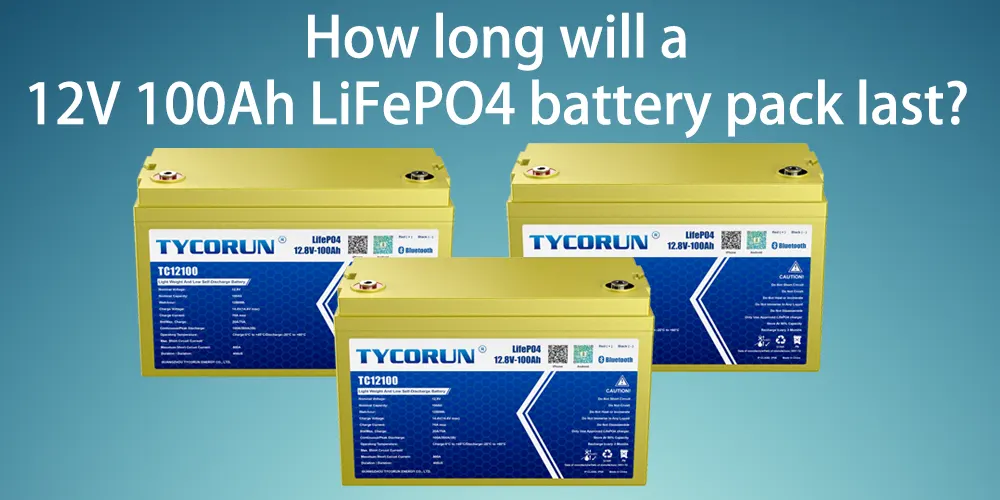
Runtime (in hours) = Battery capacity (Ah) / Average power consumption (A)
Runtime = 100Ah / 10A = 10 hours
Please note that this calculation assumes a constant power draw and does not account for inefficiencies, voltage drops, or factors that can affect the battery’s performance over time. Additionally, the DOD (depth of discharge) plays a significant role in battery lifespan.
A higher DOD, such as 90% of its capacity(That is, the capacity of the 100ah battery decays to 90ah), will result in a longer overall lifespan than a lower DOD, such as 80%(That is, the capacity of the 100ah battery decays to 80ah).
Considering these factors and performing more detailed calculations based on your system’s specific requirements and usage patterns is imperative to get a more accurate estimate of the battery pack’s expected runtime.
Application scenarios of LiFePO4 battery pack
LiFePO4 battery packs are used as a renewable energy storage unit, power electric vehicles, power tool and power wheels battery, portable power station, and as backup power sources. It is also used in industrial equipment and off-grid systems. Their long cycle life, durability, and safety features make them a preferred choice across different sectors.
Conclusion
With its remarkable capabilities and versatility, the LiFePO4 battery pack has an important role in energy storage system. Its wide-ranging applications in electric vehicles, renewable energy systems, backup power solutions, and numerous other industries have rendered the LiFePO4 battery pack an indispensable component in today’s energy storage segment.
The battery pack’s high energy density, extended cycle life, and enhanced safety features make it a preferred choice for reliable and sustainable power storage.

